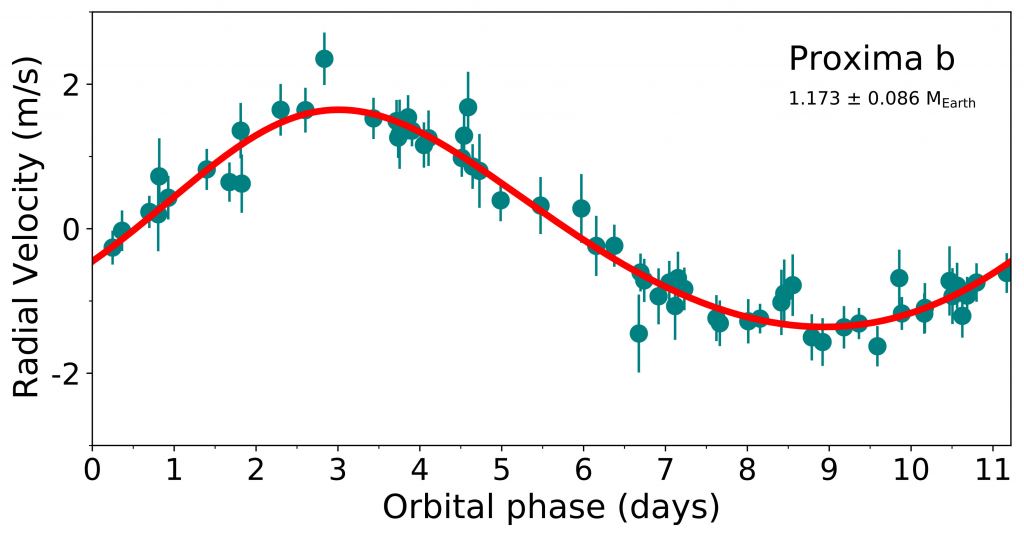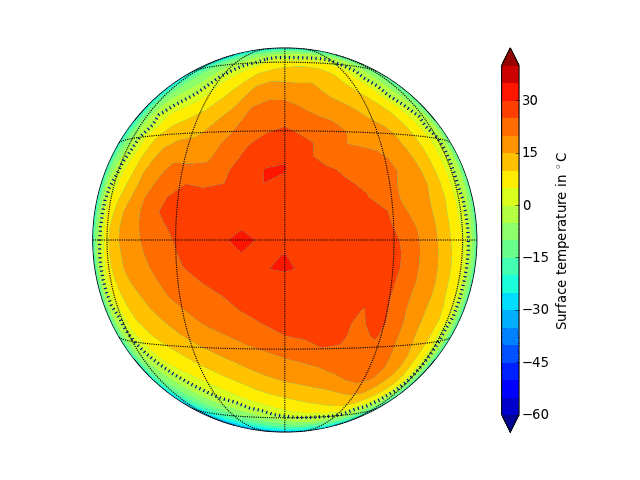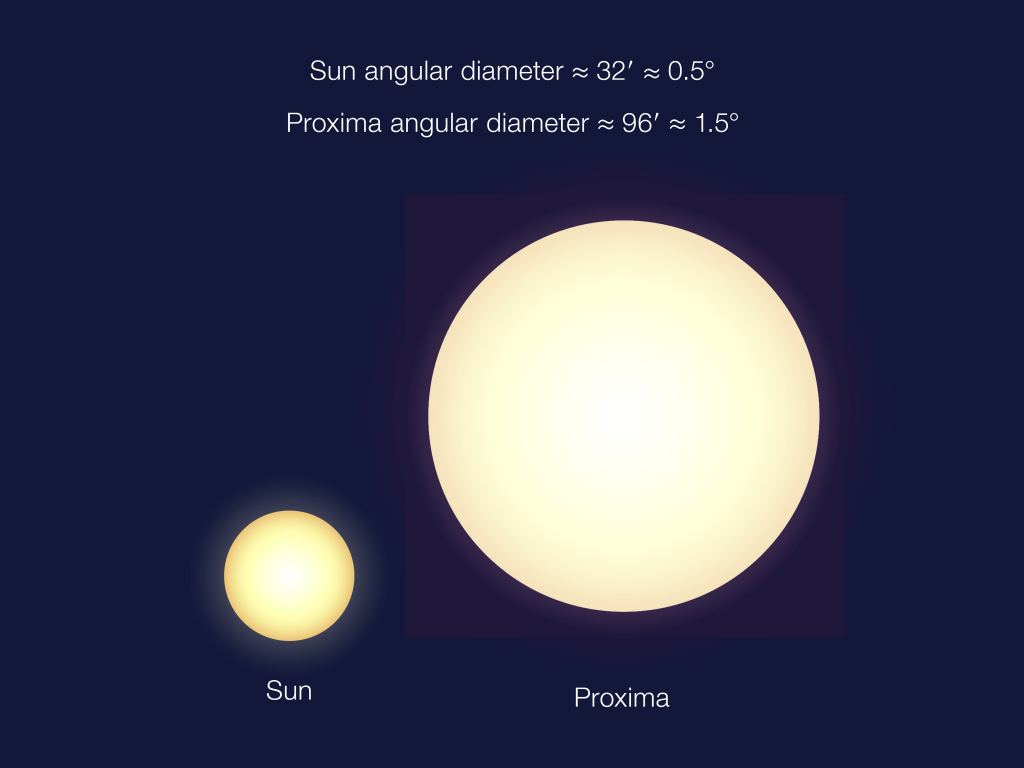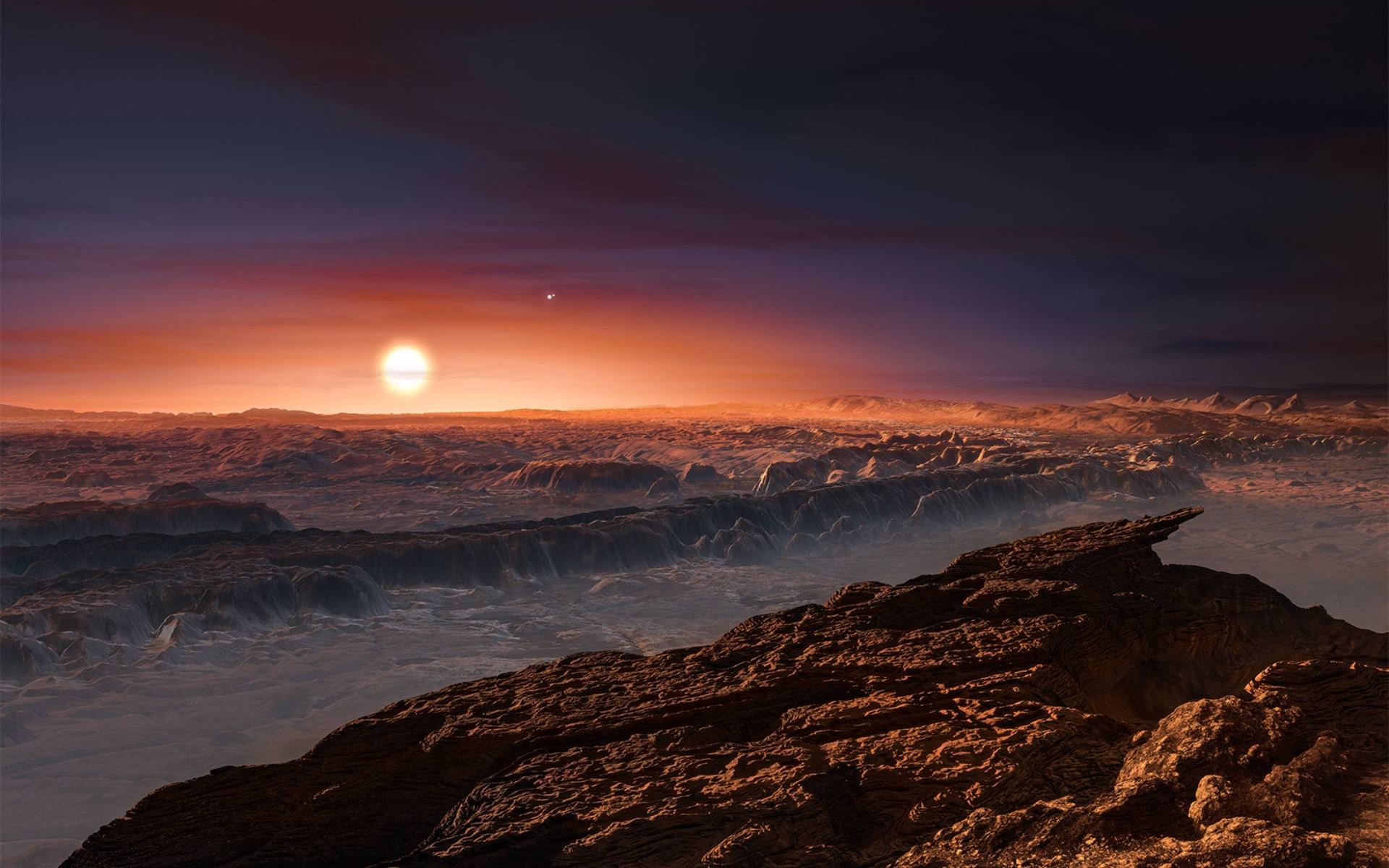The closest star to the Sun is a small red dwarf star known as Proxima Centauri. It is only 4.2 light-years away and is now known to have an Earth-sized planet in its habitable zone. That doesn’t mean there is life orbiting the nearest star, but its proximity should help us understand the possibilities.

Known only as Proxima Centauri b, it was first discovered in 2016. While most exoplanets are discovered by the transit method, where the orbit of the planet carries it between its star and us, this particular world was discovered using the Doppler method. As the planet orbits Proxima Centauri, its gravitational pull causes the star to wobble slightly. Because of this, the starlight is slightly blueshifted and redshifted due to its motion relative to us. By measuring the doppler shift of the starlight, we can determine its relative velocity. Since we know the mass of Proxima Centauri, the relative velocity tells us how strong the gravitational pull of the planet is, which in turn tells us its mass.
Making a Doppler measurement isn’t easy. With red dwarf stars, there is the added complication that solar flares and the like can also give a Doppler shift since a part of the star’s surface is rising and falling. When first measured in 2016, the data strongly suggested the presence of a planet, but it wasn’t as solid as we’d like. But new measurements using a high-precision spectrometer known as ESPRESSO has confirmed the planet’s existence. The study also confirmed the planet’s mass and orbit. It is about 20% more massive than Earth and orbits Proxima Centauri at just the right distance to support liquid water on its surface. So it could be a rocky, warm, wet planet similar to our own.

Before we get too excited, there are plenty of reasons why it could be a dry, lifeless rock. To begin with, Proxima Centauri is only an eighth the mass of the Sun and is quite a bit cooler and dimmer. Its habitable zone is very close to the star. Proxima Centauri b is only 0.04 au from its star, which is one-tenth the distance of Mercury from the Sun. It makes an orbit in only 11 days. This is so close that the planet could be tidally locked, meaning that one side of the planet faces the star, similar to the way one side of the Moon faces Earth. The near side of the planet could be much hotter than the Earth, and the far side much colder.

Another challenge for possible life on the planet is that Proxima Centauri is a flare star, meaning that it often has large flares that create both strong stellar winds and intense x-rays. The planet would need a thick atmosphere to protect life from deadly x-rays, but the strong stellar winds might strip most of its atmosphere away. Could life ever arise on such an extreme and precarious world?
The good news is that this could answer that question. Red dwarfs make up about 75% of the stars in the Milky Way, and thus most potentially habitable worlds orbit these small stars. Proxima Centauri is close enough that we can study its world in detail. By understanding Proxima Centauri b, we can understand the most common of exoplanets. Whether inhabited or not, it is our closest Earth-like neighbor.
Reference: Anglada-Escudé, Guillem, et al. “A terrestrial planet candidate in a temperate orbit around Proxima Centauri.” Nature 536.7617 (2016): 437-440.
Reference: A. Suárez Mascareño, et al. “Revisiting Proxima with ESPRESSO.” arXiv preprint arXiv:2005.12114 (2020).

